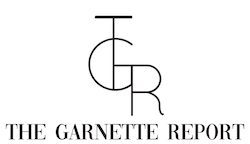
Pros and Cons to the “Rupaul’s Drag Race: All Stars 10” Format
This summer, “Rupaul’s Drag Race: All Stars” Season 10 aired on Paramount+. The season was overall a successful one, the highest-rated finale in three years and ended with Ginger Minj taking home the crown. While the ratings were great in terms of how many people were watching, there were still some problems that viewers had (you can’t have a successful “Drag Race” season without fan discourse) and a lot of them seem to stem from the format, the queens of this season essentially being guinea pigs testing a whole new way of competing.
For “All Stars” Season 10, the show introduced a completely new format for the competition – 18 queens would be split up into three brackets of six queens, where each bracket would have three queens make it to the “merge” based on who earned the most points. Then those 9 queens who made it to the merge would compete for a couple more episodes, until the finale, where 8 of them would have to do a lip-sync tournament to win the whole season. While the format started out great and gave a much-needed shake up to the franchise, there are still some messy parts of it. Here are a few of the pros and cons to this new tournament-style format.
Pro #1: Shorter filming times for the queens
While a season of “Drag Race” usually takes about a month to film, because the cast is split up into brackets, the contestants only have to take off about a week or so to film. If they make it to the merge, then they’ll get a break and only need to leave for another week or so for the post-merge episodes. Not making queens pause their life for an entire month to film a drag race season is much more convenient for them, and will make a lot more queens want to say yes to coming back to the show.
Pro #2: Smaller runway package for queens to prepare
When cast on “Drag Race,” usually a queen has to prepare a runway package for an entire season, bringing all of those runway looks with them even if they end up getting eliminated early and only get to show one or two looks. But with the bracket format only having three challenges per bracket, the queens only have to focus on preparing three runway looks, and are guaranteed to show all of them since there aren’t any eliminations until the end of the bracket. This is another thing that will make a lot more queens be willing to accept an invite to “All Stars,” since they won’t have to worry about blowing all their money on a bunch of runway looks without being sure that all of them will be shown.
Pro #3: More attention put on queens during their bracket
Instead of a season starting out introducing 12-14 new queens at once, each bracket takes turns with a cast of six queens, where a guaranteed three weeks of the audience’s attention will be completely given to these six contestants. This gives each queen so much more exposure, where no one will have to feel like they are fading in the background.
Con #1: Puts almost all control of the narrative into producers’ hands
Every other season of “Rupaul’s Drag Race” has given the queens some kind of way to “fight” for their spot. In regular seasons, the bottom two queens of the episode have to lip sync, and whoever wins gets to stay. In most “All Stars” seasons, the queens who won that week are in charge of eliminating each other, where the bottom queens get a chance to plead their case to the top queens. But with this tournament format, even if you’re doing well in the challenges, if you aren’t one of the people “standing out” right away then you can easily be left in the dust without having any way to prove yourself worthy to the judges/producers.
Con #2: Over-exhausts options for casting
While a cast of eighteen queens for the tournament format is exciting, it is also very much exhausting the show’s resources. The cast of an “All Stars” season is usually about 12 queens, so by adding an extra six to the cast for the tournament format, if you keep this format going you are using up what could have been three seasons worth of queens in just two seasons, what could have been six seasons of regular “All Stars” in just four seasons. Considering the fact that the show already seems to be running out of people to invite back, it being normal at this point for someone to come back for a third or fourth time, using up even more of your pool of available queens for each season might not be the best idea.
Con #3: Messy finale format
With a format where eight queens will still be remaining on the final episode, when there’s usually only supposed to be three or four making it to the finale, this can end up making for a finale that feels rushed. Not only that, but it also makes for quite a sad finale – instead of watching a finale that celebrates a top three or four, you have to watch an entire lip-sync smackdown where seven queens’ dreams will be crushed in one episode.
It seems that “Rupaul’s Drag Race: All Stars” is planning to keep going with this tournament bracket-style format, and that this won’t be a one-time thing that they did for Season 10. There are great things about this format that make it exciting to possibly become a new norm, and luckily, the flaws of this format are things that could be cleaned up or tweaked if producers take the time to go back to the drawing board.
Featured image by Chris Robert via unsplash.com



